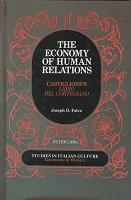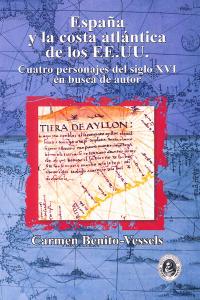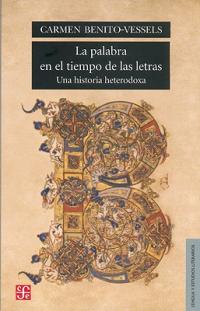SLA Students Shine at AAAL Conference in Texas
Discover the research presented by our students and faculty at the 2024 American Association for Applied Linguistics (AAAL) conference in Houston, TX.


Research in the School of Languages, Literatures and Cultures is interdisciplinary and vibrant.
Faculty and graduate students pursue research in numerous fields of study.
Modernidad, colonialidad y escritura en América Latina. Ed. María Jesús Benítez. Comp. Valeria Añón y Loreley El Jaber. Tucumán, Argentina: Editorial de la Universidad Nacional de Tucumán (EDUNT).
Read More about Malinches canarias: hacia un mestizaje light
This book is the first monograph wholly devoted to the subject of non-normative masculine gender and male sexuality in Enlightenment Spain. It analyzes journalistic essays, poetry, and drama in order to show that Spanish authors employed satirical images of unconventional men to shape the national dialog on gender and sexuality. The first half of the book is devoted to studying the gendered and sexual problematic of the "petimetre," an effeminate, Francophile male stock character who figured a failed masculinity, a dubious sexuality, and an invasive French cultural presence in Spain. The study counters traditional scholarship on this figure, which has argued that the "petimetre" was a trope configured to assuage anxieties resulting only from gender-related issues, by positing that the character was also created to address concerns about sexuality. The second half of the book examines same-sex male desire, love, and erotica and argues that the "bujarrón," a man who had sexual relations with men, was normally portrayed in cultural discourse as a foreigner or clergyman as a tactical maneuver designed to heighten xenophobia and undermine Church power. The second part also re-evaluates the scholarly position on male relationships in pastoral poetry, maintaining that rather than depicting just friendships, some of the poetry evinced homoerotic desire and imitated Virgilian verse in style and theme. This study argues that it is within the Enlightenment rather than the post-Enlightenment period that modern day notions of masculine gender and sexuality were embedded into the fabric of Spanish society.
In late eighteenth-century Spanish discourse, moralists and satirists attempted to redress what they deemed a grave social issue: the loss of a masculine, virtuous visibility in men, especially in young, well-heeled males. In moralist essays, the petimetre became the quintessential trope for the idle, effeminate, aristocratic Spanish man. He was created as a literary figure to stand in marked contrast to the manly hombre de bien, who represented martial valor and heteronormative privacy. Juan Antonio Mercadal, author of El Duende Especulativo sobre la vida civil (1761), delved into the fray with, among other writings, his “Discurso Nueve.” In this essay, he names and describes a type of man whom he refers to as “hermaphrodita.” Like the petimetre, he is a queer male figure who transgresses the dimorphous gendered system. By employing the term “hermaphrodite,” Mercadal conjures up images of an intersex person who retained a monstrous, almost mythical reputation in the eighteenth century. This works to configure in the mind of the reading public a man whose sexuality is abhorrent in an era of hardening heteronormative sexual roles. Mercadal’s “hermaphrodita” has the look, the walk, and the talk of a woman but still seems to be of the male sex, according to Mercadal. In effect, the satirist is employing a coded word to invent a new reality: an intergendered male who challenges what it means to be a man or a woman. By utilizing a new term to identify and describe a male who is deemed problematic along gender and sexual lines, Mercadal delineates the narrowed parameters of what constitutes a “real” Spanish man. The unintended result of Mercadal’s essay is the creation of a new identity that brings together “ser” and “aparecer,” or reality and illusion. By creating the figure of the “hermaphrodita,” Mercadal engendered the very reality he wished to combat.
In 1899, the United Fruit Company (UFCO) was officially incorporated in Boston, Massachusetts, beginning an era of economic, diplomatic, and military interventions in Central America. This event marked the inception of the struggle for economic, political, and cultural autonomy in Central America as well as an era of homegrown inequities, injustices, and impunities to which Central Americans have responded in creative and critical ways. This juncture also set the conditions for the creation of the Transisthmus—a material, cultural, and symbolic site of vast intersections of people, products, and narratives. Taking 1899 as its point of departure, Dividing the Isthmus offers a comprehensive, comparative, and meticulously researched book covering more than one hundred years, between 1899 and 2007, of modern cultural and literary production and modern empire-building in Central America. The book examines the grand narratives of (anti)imperialism, revolution, subalternity, globalization, impunity, transnational migration, and diaspora, as well as other discursive, historical, and material configurations of the region beyond its geophysical and political confines. Focusing in particular on how the material productions and symbolic tropes of cacao, coffee, indigo, bananas, canals, waste, and transmigrant labor have shaped the transisthmian cultural and literary imaginaries, the book develops new methodological approaches for studying cultural production in Central America and its diasporas. Monumental in scope and relentlessly impassioned, this work offers new critical readings of Central American narratives and contributes to the growing field of Central American studies.
This essay revisits the production of Chicana/Latina feminist narratives identified with anti-imperialist struggles and hemispheric solidarity movements in Central America in the 1980s and 1990s. Through their texts, transfronterista feminists such as Gloria Anzaldúa, Ana Castillo, Carole Fernández, Graciela Limón, Demetria Martínez, Cherrie Moraga, Lourdes Portillo, Nina Serrano, Alma Villanueva, and Helena María Viramontes, among others, not only challenged U.S. hegemony in the Western hemisphere, but also resisted the enforcement of multiple borders across the Americas.'' In the process, they transnationalized Chicana/Latina struggles, histories, discourses, and feminisms beyond the U.S.-Mexico borderlands. However, their transfronterista feminist logic and anti-colonial imperative, while appealing to transnational Third World feminist struggles and affinities, produced a "fiction of solidarity" predicated on Chicana/Mexicana subjectivities. Examining the production of many of these solidarity fictions, and especially Portillo and Serrano's film, “After the Earthquake,” and Martinez's semi-autobiographical novel, Mother Tongue, this essay seeks to shift the primary focus of Chicana/o resistance, resilience, and hybrid borderizations that has shaped many Chicana/Latina narratives about the wars in Central America and to rethink transfronterista alliances and narratives in the Americas from a Central American subjective location.
![Entre alambradas y exilios. Sangrías de las Españas y terapias de Vichy" [Between Barbed Wire and Exile. Spanish Sangrías and Vichy Therapies]](/sites/default/files/styles/headshot/public/2021-07/entre_alambradas_portada-contraportada_0.jpg?itok=5X9mcleX)
"Entre alambradas y exilios. Sangrías de las Españas y terapias de Vichy" [Between Barbed Wire and Exile. Spanish Sangrías and Vichy Therapies] by José María Naharro-Calderón, Professor of Spanish Literature, Iberian Cultures & Exile Studies at the University of Maryland, discusses the complex historical memories that surround the Spanish Civil War (1936-39) exile narratives around concentration camps, identity and political confrontations. They resurface again through planetary violences and diasporas, populisms, post-truths, brexit, elections in the USA, or constitutional challenges in Spain (Catalonia, Basque Country.) This detailed study explores diasporas and concentration camp experiences reflected in essay and literary contributions (Celso Amieva, Manuel Andújar, Max Aub, Otilia Castellví, Eugenio Ímaz, Eulalio Ferrer, 1956 Literature Nobel recipient and UM Professor Juan Ramón Jiménez, Silvia Mistral, Mercè Rodoreda, Jorge Semprún, etc.,) image and film (Mario Camus, María Luisa Elío, Fernando Fernán Gómez, Jomí García Ascot, Agustí Villaronga,) comic books (Manuel Altarriba, Josep Bartolí, Kim, Paco Roca,) and photography (Robert Capa, Agustí Centelles, Manuel Moros, Gerda Taro.) It also studies kitsch best sellers (Javier Cercas, Arturo Pérez Reverte, Andrés Trapiello), and the democratic contradictions that lead to freedoms suppressions and concentration camps, such as in 1939 France, as well as the pending questions of Francoist memories: "The Uncivil Mountain" or the Valley of the Fallen outside Madrid. Last but not least, it evaluates Spain’s Transition to democracy and today’s terrorist and nationalist challenges, paving the debate away from ineffective Vichy type therapies and/or Spanish sangrías.



Among current educational challenges are an increasing number of English Language Learners (ELLs) and a lack of bilingual special educators adequately prepared in the areas of bilingualism, cultural diversity and disability. This chapter begins by exploring learning disabilities (LD) in ELLs, the nature of LD and the need for bilingual special educators. It next considers research on the lack of appropriate assessments, disproportionality of ELLs in special education, and best instructional practices. It ends by looking at future issues such as appropriate teacher certification, new uses of technology and college age students and adults with learning disabilities. Lavine, R. Z. & Goode, C. “Special Educators and Spanish”. Ed. Manel Lacorte. In The Routledge Handbook of Hispanic Applied Linguistics, New York: Routledge, 2015: 438-456.